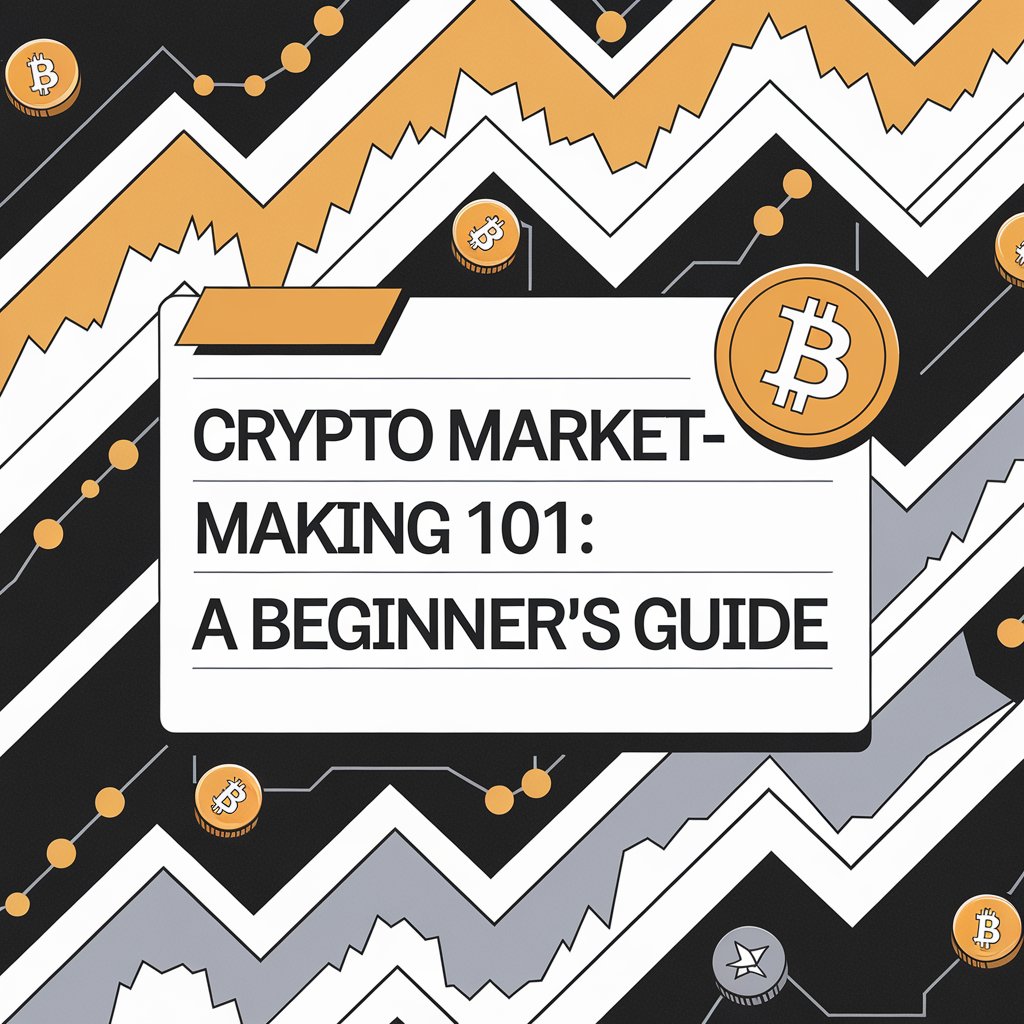Let’s face it: the crypto market is a total mess. Prices shoot up and down, the liquidity dries up just when you really need it, and trading can feel like trying to cross a minefield. That’s where crypto market making comes in. It’s the behind-the-scenes activity that keeps cryptocurrency trading alive and well. It’s the market makers who make sure that one could always find a buyer or seller, even in conditions of high volatility.
Without them, the crypto market would be a much more difficult place to trade. During your log into an exchange to buy Bitcoin, only to see a huge gap between the price to buy and the price to sell. That gap-known as the bid-ask spread-creates inefficient and costly trading. It is here, to bridge that gap, that a market maker steps in by injecting liquidity so that the wheel of trading keeps oiled.
Yellow Capital as a leader in the field of crypto market making will help us break down what crypto market making is, why it matters, and how it works.
What is Crypto Market Making?
Well, crypto market making does sound complex, but it actually is pretty simple. In its core, it’s about creating a market for an asset by continuously offering to buy and sell it. That means placing both buy and sell orders on exchange-the so-called bid and ask orders-so that traders would face zero or at least very slight delays in their transaction instead of waiting for someone else to appear.
For example, Alice wants to sell 1 ETH. She places her order on an exchange, and at her asking price, there is no buyer. In this case, if there is an active market maker, they would fill in and buy her ETH, thus keeping the trade flowing. They, in turn, would then sell that ETH to another party, ideally at a slightly higher price and net a gain.
That small profit comes from the bid-ask spread. If a market maker bids $1,000 to buy ETH and offers to sell it for $1,005, that $5 spread is their earning for providing liquidity. Repeat this process across thousands of trades, and it adds up.
Why is Market-Making Important in Crypto?
The crypto market is unique: highly fragmented across dozens of exchanges, very volatile, and many times thin on liquidity compared to more traditional markets. The high-frequency crypto market solves these problems, making cryptocurrency trading more efficient and accessible, hence making the function very critical.
Think of what happens in a crypto rally: prices go up, and people rush to buy. An asset can spike out of control with illiquidity, causing a plethora of inefficiencies in which traders’ capability of getting a fair price is hampered. That’s where market makers come in: they ensure there is always supply to meet demand in order to keep the market stable.
www.yellowcapital.com has observed how market makers play an even bigger role during market downturns. When panic sets in, and liquidity dries up, market makers continue to operate, providing stability when traders need it most. This consistency is what keeps the crypto market functional, even in its most volatile moments.
Who Can Become a Market Maker?
Anyone can theoretically become a market maker, but doing it well requires specific skills, tools, and resources. On one end of the spectrum, you have individual traders using simple strategies on smaller exchanges. On the other, there areinstitutional players like Yellow Capital, running sophisticated algorithms to manage liquidity across multiple platforms.
You will need good market knowledge to get started, some trading capital, and decent software to actually place the trades. Most professional market makers today also leverage automation-manual trading simply cannot keep up with today’s crypto market.
This could be interpreted to mean that an independent market maker uses a basic bot to provide liquidity to a certaintrading pair on a decentralized exchange. On the contrary, Yellow Capital would utilize sophisticated systems to manage multi-exchange and asset large-scale operations by dynamically optimizing between risk and efficiency. Both approaches work, but the tools and strategies differ depending on your goals and resources.
How Does Crypto Market-Making Work?
Market making in crypto shares some similarities with running a shop. You’re constantly selling and buying your inventory, except this inventory bears names like cryptocurrencies. The goal is to always have something to sell while keeping enough cash-or stablecoins-on hand to buy more.
Here’s how it works in practice:
Let’s say a market maker is providing liquidity for the ETH/USDT pair on an exchange. They might place a buy order for 1 ETH at $1,000 and a sell order for 1 ETH at $1,010. If someone sells ETH to the market maker at $1,000, the market maker now owns that ETH and can sell it at $1,010. The $10 spread becomes their profit.
The trick is being able to manage those orders efficiently, especially in such a volatile market. Say ETH suddenly spikes at $1,100; the market maker has to rush to reset their buy and sell price to not get stuck with inventory at outdated prices.That is where automation comes in: advanced algorithms making those adjustments in real time.
Market makers also need to monitor their exposure. Holding too much of one asset can be risky if the price tanks. For example, if a market maker accumulates a large amount of a niche altcoin and the price plummets, they could face significant losses. Balancing this risk while providing liquidity is a key part of the job.
Risks and Challenges in Market-Making
Crypto market making isn’t an easy business. It’s a high-risk, high-reward activity that requires constant vigilance. Here are some of the main challenges:
Volatility
Crypto prices change in seconds, and market makers are exposed to these swings. For instance, if a market maker buys ETH at $1,000 but the price drops to $950 before they can sell it, they take a loss. Managing this volatility is one of the toughest parts of the job.
Regulatory Uncertainty
The rules around crypto market making vary by region, and they’re constantly changing. Market makers need to stay compliant while adapting to new regulations. This can mean anything from paying taxes on trades to dealing with restrictions in certain countries.
Technical Risks
Market makers heavily rely on technology, and it’s not always perfect. A glitch in an algorithm or a server outage can lead to massive losses. Cybersecurity is another concern—hackers have targeted market makers in the past, stealing funds or sensitive data.
Thin Markets
Some trading pairs don’t have much volume, which can make market-making more challenging. It’s close to impossible to manage inventory and profit from spreads without buyers and sellers. Market makers have to carefully select which pairs to focus on.
Yellow Capital’s approach to these challenges involves a combination of cutting-edge technology, market expertise, and risk management strategies. But even the best market makers need to stay sharp to avoid pitfalls.
Conclusion
Market making in the crypto market is about the thin bridge holding the machinery of cryptocurrency trading together. It falls to him to ensure the gap between buyers and sellers gets bridged, liquidity becomes available, and prices get stabilized-that is, a smoother market in short. Whether you are an ambitious beginner or a professional trader, grasping how market making works will be necessary for a deep understanding of crypto markets.
What Yellow Capital’s expertise really underlines is that market making requires much more than simply the right tooling and strategies, essentially an open-minded approach. As the industry keeps building on itself, its future within crypto trading lies with the market maker. To those ready to dive in, it’s a challenging area with possible rewards and endless opportunities for growth and innovation.









